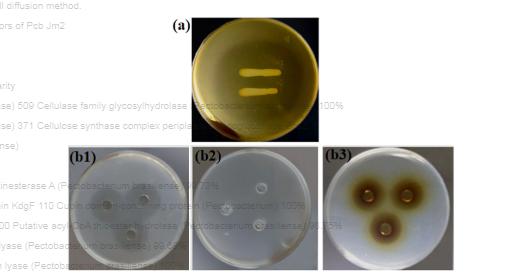Soft rot is the most important bacterial disease of postharvest pepper during storage and transportation. Pathogens Pectobacterium carotovorum, Enterobacter sp., Klebsiella sp., Pseudomonas sp. and Bacillus sp. were verified to be the causes of soft rot which were isolated from rotten peppers. Among them, P. carotovorum had the highest prevalence, including P. carotovorum subsp. carotovorum (Pcc) and P. carotovorum subsp. brasilisesis (Pcb). The result of pathogenicity analysis showed that Pcb Jm2 had strong pathogenicity at 25 °C even at a cell concentration of 103 CFU mL−1. Its pathogenicity decreased at 4 °C. Multiple pathogenic factors were identified in the draft genome of Pcb Jm2, including cellulase, pectinase, pectin methylesterase, pectinesterase, pectin lyase, polygalacturonase and so forth. Further, the disease control ability of Lactobacillus farciminis LJLAB1 was investigated. The cell-free supernatant (CFS) and crude bacteriocin of L. farciminis LJLAB1 had good antibacterial activities to Pcb Jm2 in vitro, but CFS exhibited a better disease control effect in vivo. CFS treatment prevented the damage of pepper epidermal structure caused by Pcb Jm2, and 99.26% of pathogen cells on pepper were killed by it. Moreover, CFS treatment delayed firmness decrease, soluble solid content loss, weight loss, yellowing and malonaldehyde accumulation of pepper during storage after pathogen infection.
L. farciminis LJLAB1 can be an effective biological control agent to control pepper soft rot caused by Pcb.
Reference: Li, X., Li, G., Yi, L. and Zeng, K. (2024), Soft rot of postharvest pepper: bacterial pathogen, pathogenicity and its biological control using Lactobacillus farciminis LJLAB1. J Sci Food Agric, 104: 443-455. https://doi.org/10.1002/jsfa.12942












